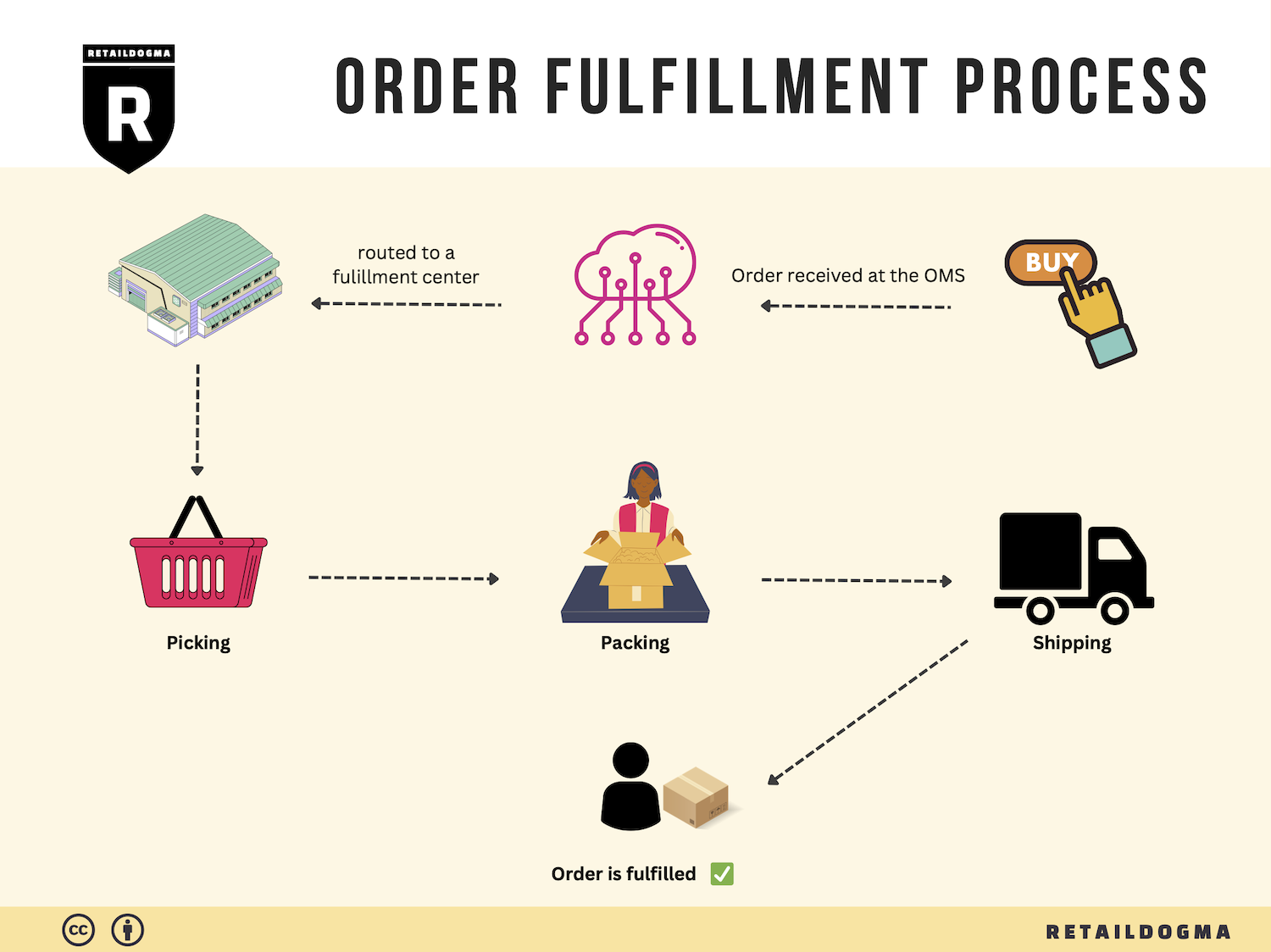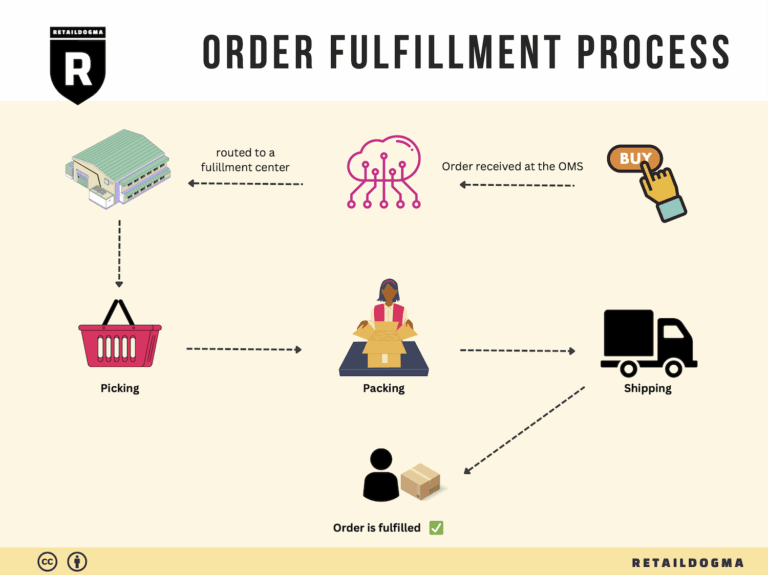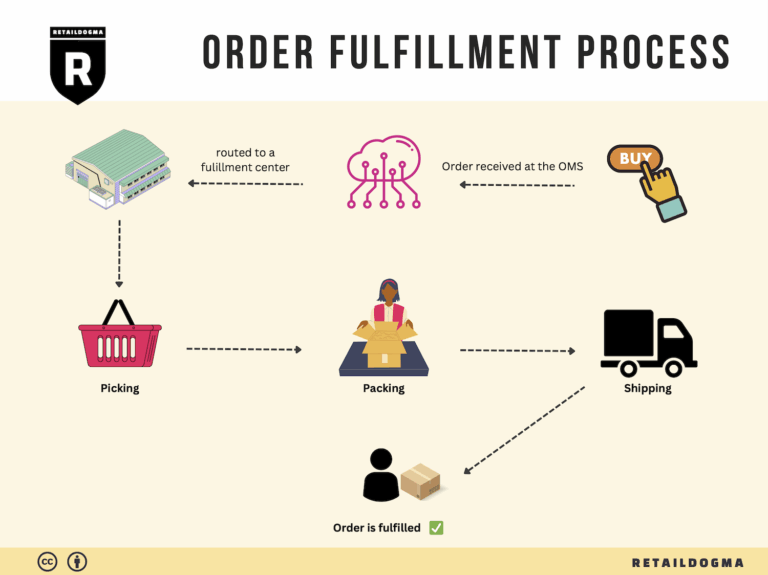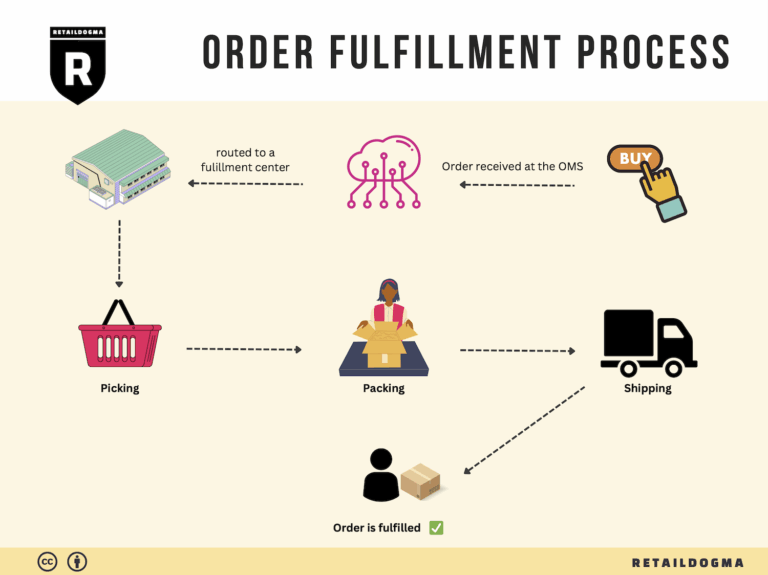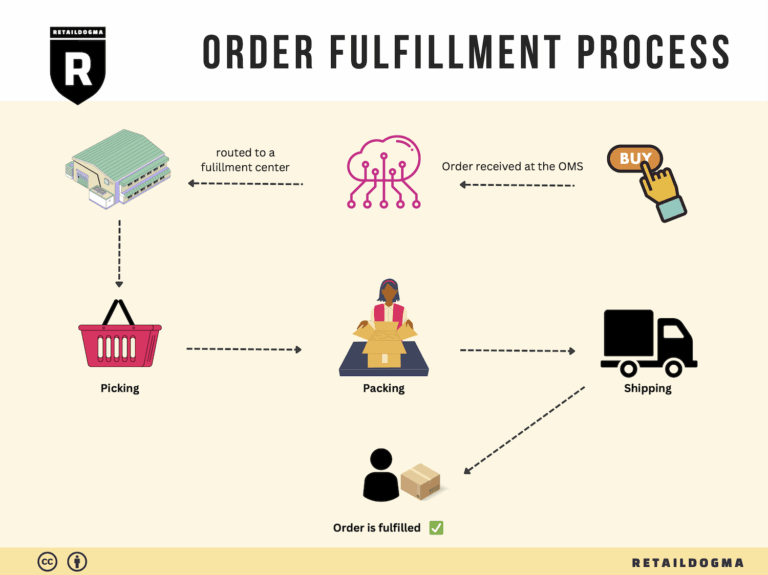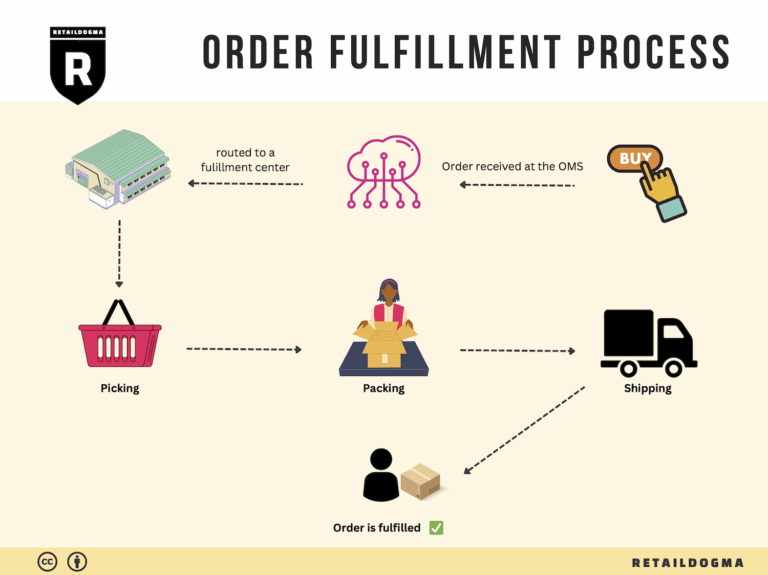Ecommerce Fulfillment Services: The Ultimate Guide (2025)
What is E-commerce Fulfillment? An Introduction for Growing Businesses
Understanding the Challenges of E-commerce Fulfillment
As a growing online business, you might find yourself grappling with a common challenge: the overwhelming task of packing and shipping orders efficiently. The excitement of making sales can quickly turn into stress as you face the logistical hurdles of getting your products to customers on time. This is where e-commerce fulfillment comes into play.
E-commerce fulfillment is simply the process of getting a product from your inventory into the hands of your customers. It involves several steps, including receiving orders, picking and packing items, and shipping them out for delivery. For many businesses, especially those in the growth phase, managing these logistics can become a daunting task that diverts focus from core business activities like marketing and product development.
What This Guide Will Cover
This guide aims to demystify e-commerce fulfillment and provide you with the knowledge to navigate your options effectively. We will explore various fulfillment models, such as Third-Party Logistics (3PL) and Fulfillment by Amazon (FBA), outlining their benefits and challenges. Understanding these models is crucial for selecting the right approach that aligns with your business needs.
In addition to models, we’ll delve into the core services involved in fulfillment, including inventory management, order processing, and shipping. Knowing what services are available will help you evaluate potential partners and their capabilities.
Choosing the right fulfillment partner is another critical aspect we will discuss. Factors such as location, technology, scalability, and customer service should influence your decision. We will provide practical tips on how to assess these criteria to find a partner that can support your growth trajectory.
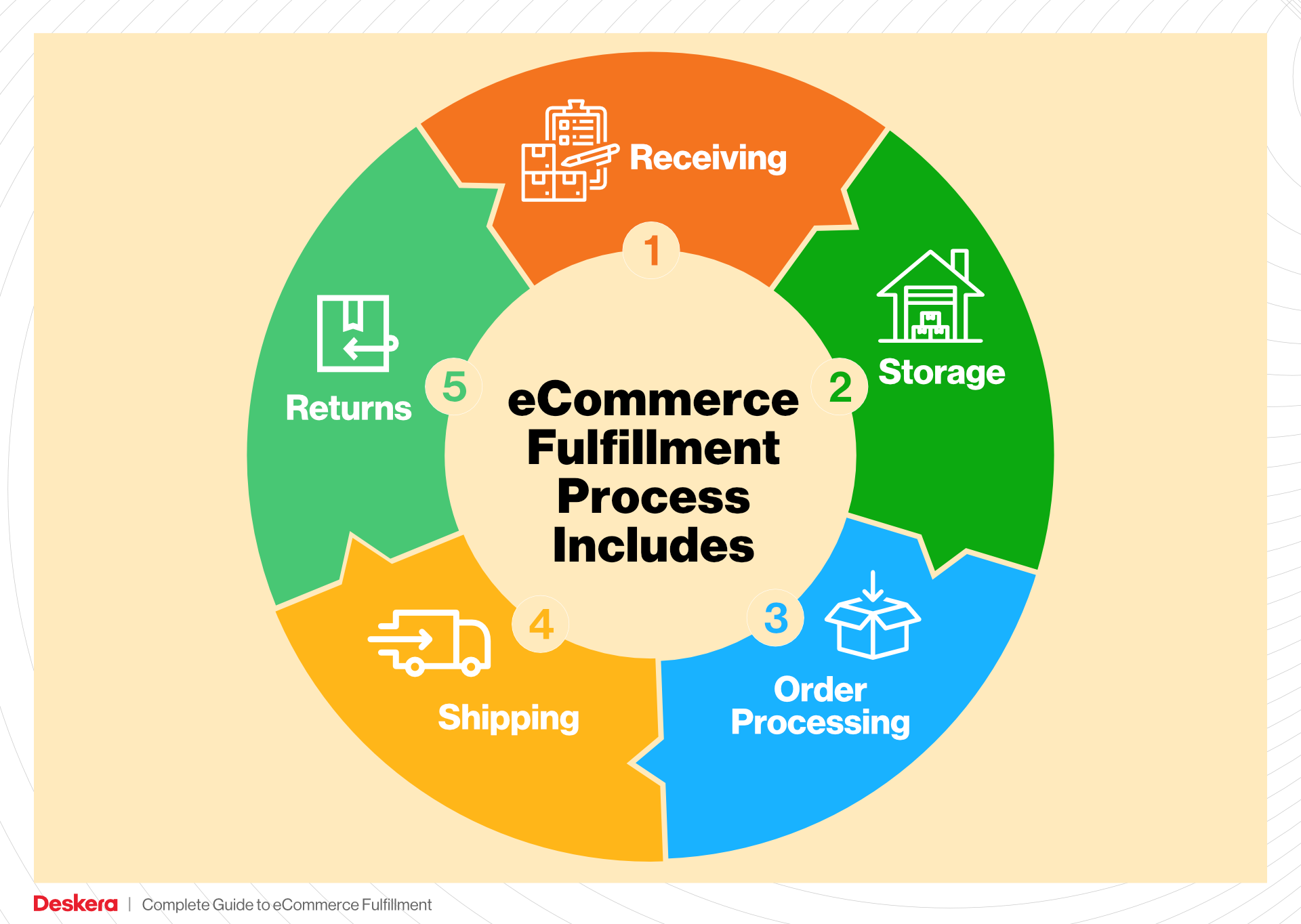
Lastly, we will cover pricing structures associated with different fulfillment options. Understanding the costs involved, including storage fees, pick-and-pack fees, and shipping costs, will empower you to make informed financial decisions.
Empowering Your Logistics Decisions
Our goal with this guide is to empower you as a business owner or operations manager to make smart, strategic decisions about your logistics. By equipping you with the necessary insights into e-commerce fulfillment, you can streamline your operations, enhance customer satisfaction, and ultimately drive growth. Whether you are just starting or looking to scale, understanding fulfillment is key to your success in the competitive e-commerce landscape.
What You’ll Learn In This Guide
- What is E-commerce Fulfillment? An Introduction for Growing Businesses
- The Order Fulfillment Process: From ‘Buy’ Button to Customer’s Door
- Comparing Fulfillment Models: In-House vs. 3PL vs. Dropshipping
- A Deep Dive into Amazon FBA: Pros, Cons, and Who It’s For
- Core Services Offered by Fulfillment Centers
- How to Choose a Fulfillment Partner: A 6-Point Checklist
- Understanding Fulfillment Pricing: A Breakdown of Common Fees
- Frequently Asked Questions (FAQs) about Fulfillment
- Conclusion: Is Outsourcing Fulfillment the Right Move for Your Business?
- Important Disclaimer
The Order Fulfillment Process: From ‘Buy’ Button to Customer’s Door
1. Receiving Inventory
The first step in the order fulfillment process begins with receiving inventory. When products arrive at the fulfillment center, they must be checked against purchase orders to ensure that the correct quantities and items have been delivered. This process involves inspecting for any damages and verifying that the products match the descriptions on the shipping documents.
Importance: This step is crucial for maintaining inventory accuracy and preventing stock discrepancies that could lead to customer dissatisfaction. By ensuring that only quality products enter the warehouse, businesses can uphold their reputation for reliability.
Key Term: SKU (Stock Keeping Unit). Each product is assigned a unique SKU, which simplifies tracking and management throughout the fulfillment process.
2. Warehouse Storage
Once the inventory has been successfully received, the next step is warehouse storage. Products are organized and stored in designated locations within the fulfillment center. Efficient storage solutions, such as pallet racking or shelving systems, are employed to maximize space and facilitate easy access.
Importance: Proper warehouse organization is essential for reducing retrieval times and minimizing labor costs. It enhances operational efficiency, allowing businesses to scale without compromising service quality. A well-structured storage system can also help prevent losses from damage or misplacement.
Key Term: Bin Locations. Each storage area is assigned a bin location code, which allows warehouse staff to quickly identify where items are stored.
3. Order Picking
The third step involves order picking, where warehouse staff retrieve items based on customer orders. Using tools such as pick lists or mobile picking devices, employees locate and collect the required products from their respective bin locations.
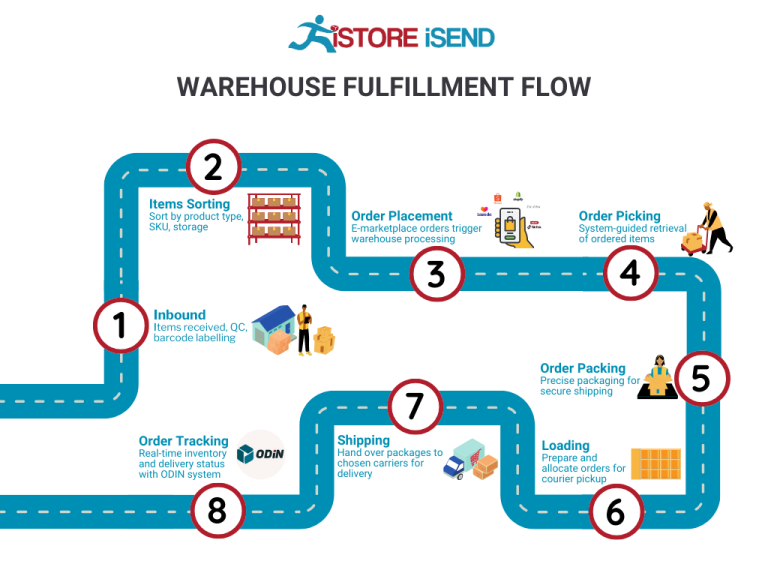
Importance: Order picking is a critical phase of the fulfillment process, as it directly impacts order accuracy and speed. Efficient picking methods, such as batch picking or wave picking, can significantly reduce the time it takes to fulfill an order, thereby improving overall customer satisfaction.
Key Term: Pick Lists. These documents detail the items and quantities needed for each order, guiding staff through the picking process.
4. Order Packing
After items have been picked, they move to the order packing stage. Here, products are carefully packed into boxes or containers, ensuring they are secure and protected for transit. This step may involve the use of packing materials like bubble wrap, foam peanuts, or paper to prevent damage during shipping.
Importance: Effective packing is vital for minimizing product returns due to damage. It also plays a role in optimizing shipping costs; lighter packages can reduce overall shipping fees. Additionally, packing can serve as a branding opportunity through the use of custom boxes or branded packing materials.
Key Term: Packing Slip. This document accompanies the shipment, detailing the contents of the package and serving as a receipt for the customer.
5. Shipping & Delivery
The final step in the order fulfillment process is shipping and delivery. Once packages are packed, they are labeled and prepared for shipment. This may involve choosing the best carrier based on cost, speed, and reliability. Once shipped, tracking information is often provided to customers to keep them informed about their order’s status.
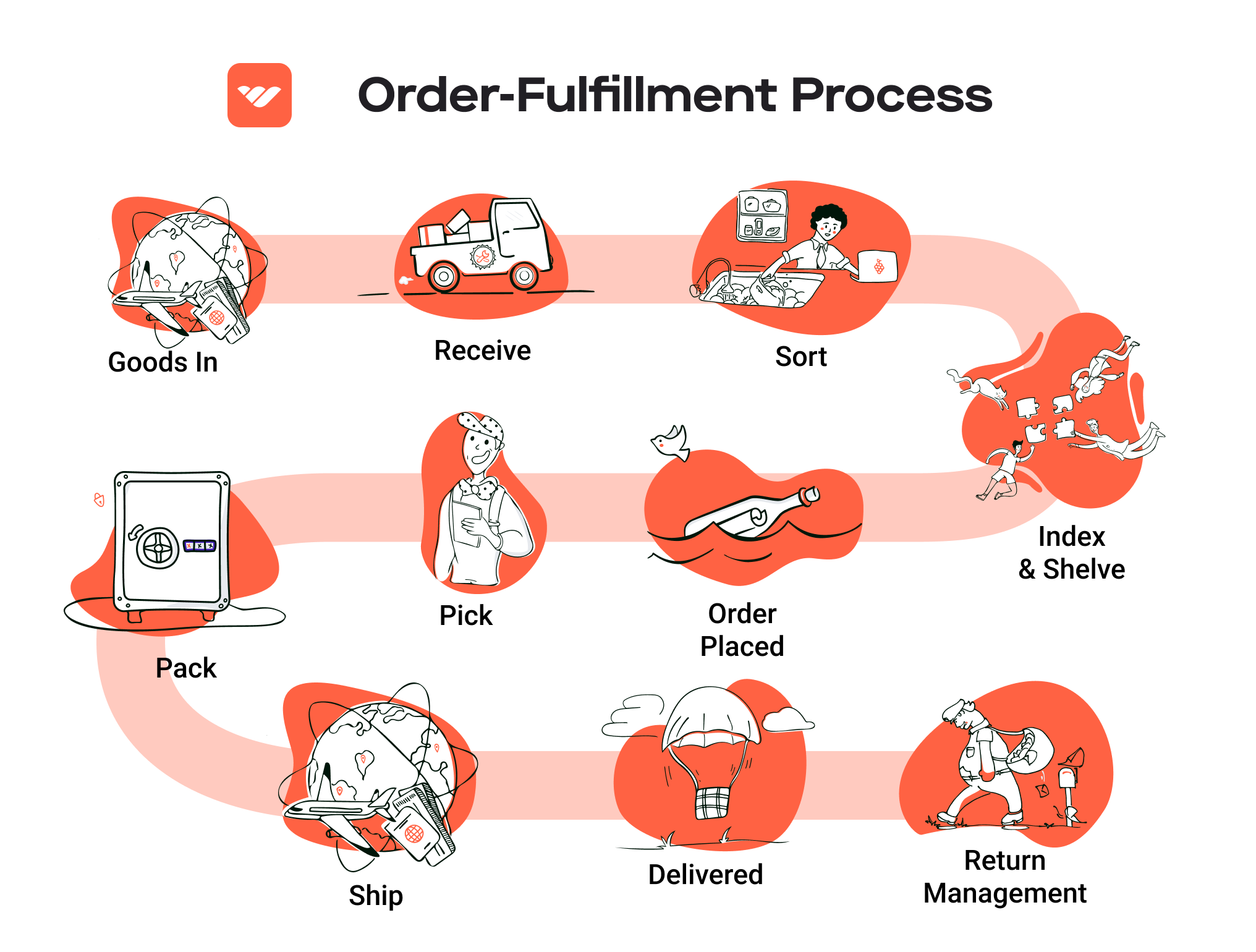
Importance: Timely shipping is critical for customer satisfaction. With the rise of e-commerce, consumers have come to expect fast and reliable delivery options. Efficient shipping processes can also lead to repeat business and positive reviews.
Key Term: Last-Mile Delivery. This term refers to the final step of the shipping process, where the package is delivered from a transportation hub to the final destination, typically the customer’s home or business.
By understanding and optimizing each of these five steps in the order fulfillment process, e-commerce businesses can enhance their operational efficiency, improve customer satisfaction, and ultimately scale their logistics capabilities successfully.
Comparing Fulfillment Models: In-House vs. 3PL vs. Dropshipping
Fulfillment Model Comparison
| Model | Who Handles Inventory | Best For (Business Stage) | Key Advantage | Key Disadvantage |
|---|---|---|---|---|
| In-House Fulfillment | The business itself | Established businesses with stable sales | Full control over inventory and processes | High overhead costs and resource demands |
| Third-Party Logistics (3PL) | External logistics providers | Startups to growing businesses | Cost-effective scalability and expertise | Less control over operations and inventory |
| Dropshipping | Supplier or manufacturer | New businesses and low-risk ventures | Minimal upfront investment and risk | Lower profit margins and reliance on suppliers |
In-House Fulfillment
In-house fulfillment involves managing the entire inventory and logistics process within your own business. This model is typically best suited for established businesses that have stable sales and a well-defined customer base. By handling fulfillment in-house, a company gains full control over its inventory, quality assurance, and shipping processes. This can lead to enhanced customer satisfaction due to the ability to tailor logistics according to specific business needs and customer expectations. However, this model comes with significant drawbacks, including high overhead costs related to warehousing, staffing, and technology investments. Businesses must also allocate substantial resources to manage these operations effectively, which can detract from focusing on core business activities such as product development and marketing.
Third-Party Logistics (3PL)
Third-party logistics (3PL) providers offer a flexible solution for businesses looking to outsource their fulfillment processes. This model is particularly advantageous for startups and growing businesses that require scalability without the burden of managing logistics in-house. 3PL providers typically have established infrastructures, including warehouses, transportation networks, and skilled labor, enabling businesses to leverage their expertise and resources. The key advantage of using a 3PL is the cost-effectiveness that comes from shared resources and reduced operational complexities. However, the trade-off is a loss of direct control over inventory and fulfillment processes, which can lead to potential issues in quality assurance and customer service. Additionally, companies may face challenges in coordinating communication between their operations and the 3PL, especially as their business scales.
Dropshipping
Dropshipping is a fulfillment model where the retailer does not hold inventory but instead relies on suppliers to ship products directly to customers. This model is particularly appealing for new businesses and entrepreneurs looking to minimize upfront investments and risks associated with inventory management. The primary advantage of dropshipping is that it allows for a broad product offering without the need for significant capital tied up in stock. Retailers can test new products and market trends with minimal financial commitment. However, the dropshipping model does come with its challenges, including lower profit margins due to reliance on supplier pricing and potential delays in shipping that can negatively impact customer satisfaction. Additionally, businesses are entirely dependent on their suppliers for inventory levels and product quality, which can introduce risks if the supplier fails to meet expectations.
Conclusion
Choosing the right fulfillment model is critical for e-commerce businesses, especially those looking to scale operations in competitive markets like Jacksonville, FL, where logistics infrastructure is robust and growing. Each model has its distinct advantages and disadvantages, and the optimal choice often depends on the specific needs, resources, and growth stage of the business. By evaluating these factors and understanding the implications of each model, business owners can make informed decisions that align with their operational goals and customer expectations.
A Deep Dive into Amazon FBA: Pros, Cons, and Who It’s For
Understanding Fulfillment by Amazon (FBA)
Fulfillment by Amazon (FBA) is a service provided by Amazon that allows sellers to store their products in Amazon’s fulfillment centers. Amazon then takes care of storage, packaging, and shipping of these products directly to customers. This service has become a cornerstone for many e-commerce businesses looking to leverage Amazon’s vast logistics network and customer base.
When a customer orders a product, Amazon handles the entire fulfillment process, including customer service and returns. This allows sellers to focus on other aspects of their business, such as product development and marketing. FBA is especially appealing for those looking to scale their operations without the burden of managing logistics.
How FBA Works
-
Product Preparation: Sellers prepare their products according to Amazon’s guidelines, which include packaging and labeling requirements.
-
Shipping to Amazon: Sellers send their inventory to Amazon’s fulfillment centers. Amazon has numerous centers across the country, including in strategic locations like Jacksonville, FL, which boasts an extensive logistics infrastructure.
-
Storage: Once the products arrive, Amazon stores them in their warehouses. Sellers can monitor inventory levels through the Amazon Seller Central dashboard.
-
Order Processing: When a customer places an order, Amazon picks, packs, and ships the product on behalf of the seller. This process is streamlined for efficiency.
-
Customer Service: Amazon handles all customer inquiries and returns, which can significantly reduce the workload for sellers.
-
Payment: After a sale, Amazon collects the payment and deducts its fees before transferring the remaining amount to the seller.
Pros of Using FBA
Prime Eligibility
One of the most significant advantages of FBA is that products become eligible for Amazon Prime, which includes fast shipping options. This increases the likelihood of sales, as Prime members are more likely to purchase items that qualify for free two-day shipping.
Customer Trust
Amazon has built a reputation for reliability and customer service. By using FBA, sellers can benefit from this trust, as products fulfilled by Amazon are often viewed as more credible and secure.
Multi-Channel Fulfillment
FBA isn’t limited to Amazon sales. Sellers can use Amazon’s fulfillment services for products sold on their own websites or other platforms, streamlining logistics across multiple sales channels.
Scalability
With Amazon handling the logistics, sellers can scale their business rapidly without the need for additional warehousing or fulfillment staff. This is particularly advantageous for seasonal businesses or those experiencing rapid growth.
Advanced Logistics Network
Amazon’s sophisticated logistics network means that sellers can reach customers quickly, often with same-day or next-day delivery options, especially in areas with established fulfillment centers like Jacksonville.
Cons of Using FBA
High Fees
While FBA provides numerous benefits, it comes with significant fees that can cut into profit margins. These fees include storage fees, fulfillment fees, and additional costs for long-term storage. Sellers need to carefully analyze their pricing strategy to ensure they remain profitable.
Strict Inventory Rules
Amazon has stringent inventory management rules, which include limits on the number of units a seller can send to fulfillment centers. This can be challenging for sellers who have fluctuating demand or seasonal products.
Commingling Risks
FBA commingling means that sellers’ inventory can be mixed with that of other sellers. This can lead to issues such as receiving returns for damaged or unsold items that were not originally yours. Sellers must be aware of this risk and consider strategies to mitigate it.
Less Control Over Fulfillment
By outsourcing fulfillment to Amazon, sellers relinquish control over how their products are packaged and shipped. This can lead to inconsistencies in branding and customer experience, which may not align with the seller’s vision.
Dependence on Amazon
Relying on FBA can create dependency on Amazon’s platform, which can be risky. Changes in Amazon’s policies, fees, or algorithms can directly impact a seller’s business.
Who is FBA Best For?
Fulfillment by Amazon is ideal for:
-
Small to Medium-Sized Businesses: Those looking to scale quickly without investing heavily in logistics and fulfillment can benefit greatly from FBA.
-
Entrepreneurs with Limited Resources: If you lack the capital or manpower to manage warehousing and shipping, FBA can free up your time and resources.
-
Businesses with High Sales Volume: Companies that anticipate high sales volumes, especially around peak seasons, can leverage Amazon’s logistics to meet demand efficiently.
-
Sellers Seeking Prime Eligibility: Brands wanting to enhance their visibility and sales through Amazon Prime should consider FBA, as it significantly increases product attractiveness to consumers.
-
Multi-Channel Sellers: Those selling on multiple platforms will find FBA beneficial for consolidating their fulfillment processes.
In conclusion, while FBA provides numerous advantages, especially for scaling e-commerce businesses, it is essential to weigh these against the potential downsides. Careful consideration of your business model, product type, and sales strategy will determine if FBA is the right fit for your operations.
Core Services Offered by Fulfillment Centers
Inventory Management & Warehousing
Inventory management and warehousing form the backbone of any successful e-commerce operation. Fulfillment centers provide businesses with the necessary infrastructure to store their products securely and efficiently. These centers utilize advanced inventory management systems to track stock levels, manage reorders, and optimize storage space.
Benefits:
-
Real-Time Tracking: Fulfillment centers employ sophisticated software that allows for real-time inventory tracking. This means businesses can monitor stock levels, ensuring they never run out of popular items or overstock less popular products.
-
Space Optimization: By using a fulfillment center, e-commerce businesses can save on the costs associated with leasing large warehouse spaces. These centers are designed to maximize storage efficiency through strategic shelving and organization, allowing businesses to scale without significant upfront investment in real estate.
-
Reduced Overhead Costs: Outsourcing warehousing can lead to significant cost savings in terms of utilities, maintenance, and staffing. Fulfillment centers often have economies of scale that allow them to operate more cost-effectively than individual businesses.
Pick and Pack Services
Pick and pack services are essential for fulfilling customer orders quickly and accurately. This process involves selecting the right products from the warehouse (picking) and packaging them appropriately for shipment (packing). Fulfillment centers streamline this operation through automation and trained staff, ensuring that orders are processed efficiently.
Benefits:
-
Efficiency and Speed: Fulfillment centers are optimized for speed. With dedicated staff and technology in place, they can pick and pack orders much faster than an in-house team could, reducing the time it takes to fulfill customer orders.
-
Accuracy: The pick and pack process is supported by technology that minimizes human error. Barcode scanning and automated systems ensure that the correct items are selected and packed, which enhances customer satisfaction by reducing the chances of order inaccuracies.
-
Scalability: As your business grows, so too does the volume of orders. Fulfillment centers can easily scale their operations to accommodate increased order volumes, allowing businesses to expand without needing to invest in additional resources.
Kitting and Assembly
Kitting and assembly services are increasingly important for e-commerce businesses that sell products requiring assembly or bundling. This service involves grouping individual items into ready-to-ship kits or assembling components into final products. Fulfillment centers can handle this process, saving businesses time and labor costs.
Benefits:
-
Enhanced Product Offering: By offering bundled products, businesses can create unique offerings that appeal to customers. For instance, a kitchenware retailer could offer a complete cooking set instead of individual items, enhancing the value proposition.
-
Time Savings: Outsourcing kitting and assembly allows businesses to focus on core operations, such as marketing and customer service, instead of spending valuable time on assembly tasks.
-
Quality Control: Fulfillment centers often have quality control processes in place to ensure that assembled products meet standards before they are shipped. This minimizes returns and enhances customer satisfaction.
Returns Management (Reverse Logistics)
Returns management, or reverse logistics, is a critical service offered by fulfillment centers. This process involves handling returned products efficiently and effectively, which is essential for maintaining customer satisfaction and minimizing losses.
Benefits:
-
Streamlined Process: Fulfillment centers have established processes for managing returns, which can significantly reduce the time and labor involved in handling returned items. Efficient returns processing helps to minimize the impact on cash flow and inventory.
-
Restocking and Reselling: Many fulfillment centers can inspect, restock, and even refurbish returned products for resale. This capability helps businesses recover some of the costs associated with returns and reduces waste.
-
Customer Satisfaction: A hassle-free return process is a significant factor in customer satisfaction. By outsourcing returns management to a fulfillment center, businesses can offer their customers a seamless return experience, which can encourage repeat purchases and foster brand loyalty.
In conclusion, partnering with a fulfillment center can provide e-commerce businesses with a competitive edge in today’s fast-paced market. By leveraging services such as inventory management, pick and pack, kitting and assembly, and returns management, companies can streamline their operations, reduce costs, and ultimately enhance the customer experience. These core services not only support growth but also enable businesses to focus on strategic initiatives that drive sales and innovation.
How to Choose a Fulfillment Partner: A 6-Point Checklist
Location & Warehouse Network
When selecting a fulfillment partner, the location of their warehouses is paramount. A strategically placed warehouse can significantly reduce shipping times and costs, enhancing your customer service and satisfaction.
Why It Matters:
– Proximity to major transportation routes and markets can lead to faster deliveries and lower shipping costs.
– Access to ports, railroads, and highways is essential for efficient logistics operations.
Questions to Ask:
– Where are your warehouses located, and how many do you have?
– What is the average shipping time to major markets from your facilities?
– Do you have a network that allows for regional distribution to minimize shipping times?
Technology & Integrations
In today’s digital landscape, the technology used by your fulfillment partner is critical. An advanced system can streamline operations, improve accuracy, and provide real-time tracking for your orders.
Why It Matters:
– Integrations with your e-commerce platform (like Amazon, Shopify, or WooCommerce) can automate order processing and inventory management.
– Real-time data and analytics can help you make informed decisions and optimize your supply chain.
Questions to Ask:
– What technology do you use for order management and inventory tracking?
– How does your system integrate with my existing e-commerce platform?
– Can you provide real-time tracking for shipments, and how is this information communicated to customers?
Specializations (e.g., Cold Storage, Oversized Items)
Not all fulfillment centers are equipped to handle specific types of products. If your business deals with specialized items, such as perishables or oversized goods, ensure your partner has the necessary capabilities.
Why It Matters:
– Specialized storage solutions can prevent damage and spoilage, ensuring your products reach customers in perfect condition.
– Understanding your product’s unique requirements can prevent costly errors and delays.
Questions to Ask:
– Do you have specialized facilities for handling my type of products (e.g., cold storage for perishables, extra space for oversized items)?
– What are your protocols for handling and storing specialized products?
– Can you accommodate seasonal fluctuations in inventory for specialized items?
Scalability & Capacity
As your business grows, your fulfillment partner must be able to scale operations accordingly. This includes having the capacity to handle increased order volumes and the flexibility to adjust during peak seasons.
Why It Matters:
– A partner with scalable solutions can support your growth without necessitating a switch to a new provider, which can be costly and time-consuming.
– Having a partner who can adjust to your needs during busy seasons can help you maintain customer satisfaction.
Questions to Ask:
– What is your current capacity, and how do you handle peak seasons?
– How quickly can you scale operations if my order volume increases?
– What contingency plans do you have in place for sudden demand surges?
Pricing and Contracts
Understanding the pricing structure and contract terms is crucial for managing your budget and ensuring a sustainable partnership. Hidden fees can significantly impact your profit margins.
Why It Matters:
– Transparency in pricing helps you avoid unexpected costs and allows for better financial planning.
– Clear contract terms protect both parties and set expectations for service levels.
Questions to Ask:
– What are your pricing models, and what factors influence costs (e.g., storage fees, shipping rates)?
– Are there any hidden fees I should be aware of?
– What are the terms of your contract, and how flexible are they if my needs change?
Customer Support & Reviews
A fulfillment partner’s customer service can make or break your experience. Responsive and knowledgeable support is essential for resolving issues quickly and effectively.
Why It Matters:
– Good customer support ensures that problems are addressed promptly, minimizing disruptions to your operations.
– Reviews and testimonials from other clients can provide insights into the partner’s reliability and service quality.
Questions to Ask:
– What support channels do you offer (e.g., phone, email, chat), and what are your response times?
– Can you provide references or case studies from businesses similar to mine?
– How do you handle issues or complaints, and what is your escalation process?
Conclusion
Choosing the right fulfillment partner is a pivotal decision that can significantly influence your e-commerce business’s success. By carefully considering these six key areas—location and warehouse network, technology and integrations, specializations, scalability and capacity, pricing and contracts, and customer support—you can make an informed choice that aligns with your operational needs and growth ambitions. Prioritize these elements in your evaluation process to establish a robust partnership that supports your business objectives.
Understanding Fulfillment Pricing: A Breakdown of Common Fees
Initial Setup Fees
When you first partner with a fulfillment center, you may encounter initial setup fees. These fees cover the costs associated with establishing your account, integrating your systems, and configuring your logistics processes. The setup process typically includes account creation, software integration (such as connecting your e-commerce platform to the fulfillment center’s systems), and possibly customizing the warehouse environment to accommodate your specific product needs.
The calculation of initial setup fees can vary significantly between fulfillment providers. Some may charge a flat fee, while others might base it on the complexity of your product offerings or the amount of training required for your team. It’s crucial to discuss these fees upfront and understand what services are included to avoid unexpected costs later.
Receiving Fees
Receiving fees are charged when your products arrive at the fulfillment center. These fees cover the labor and equipment costs associated with unloading, inspecting, and storing your inventory. Typically, this fee is calculated based on the number of units received or the total weight of the shipment.
For example, a fulfillment center may charge a per-unit fee, which means that if you send 1,000 units, you will pay a specific amount multiplied by 1,000. Alternatively, some providers may charge based on the cubic feet of space your shipment occupies during the receiving process. Understanding the specifics of how receiving fees are calculated can help you plan your shipments more effectively.
Storage Fees (per pallet/bin)
Storage fees are an ongoing cost that e-commerce businesses must account for when using a fulfillment center. These fees are charged for the space your inventory occupies within the warehouse and can be billed on a monthly basis. Fulfillment centers typically charge storage fees based on the number of pallets or bins your products occupy.
For instance, if a fulfillment center charges $20 per pallet per month and you have ten pallets stored, your monthly storage fee would be $200. Some fulfillment centers may also offer tiered pricing, where the rate decreases as you store more pallets. It’s essential to monitor your inventory levels and turnover rates to minimize storage costs, as excess inventory can lead to higher fees.
Pick & Pack Fees (per item/order)
Pick and pack fees are incurred when the fulfillment center retrieves items from storage, packages them, and prepares them for shipment. This fee can vary based on the complexity of the order, the number of items being picked, and the packaging materials used.
Most fulfillment centers charge a flat fee per order and an additional fee per item picked. For example, you might pay $2 for the first item in an order and $0.50 for each additional item. Therefore, if a customer orders three items, the total pick and pack fee would be $2 + ($0.50 x 2) = $3. Understanding how these fees are structured can help you optimize your product offerings and pricing strategies.
Shipping Fees
Shipping fees are one of the most significant costs associated with fulfillment services. These fees cover the cost of transporting your products from the fulfillment center to your customers. Shipping fees can be influenced by various factors, including the destination, the size and weight of the package, and the shipping method chosen (e.g., standard, expedited, or international shipping).
Fulfillment centers typically calculate shipping fees based on the carrier’s rates, which can fluctuate based on fuel prices and demand. Some providers offer discounted shipping rates due to their volume shipping agreements with carriers, which can be a considerable advantage for your business. Be sure to inquire about how shipping fees are calculated and whether there are options for bulk shipping discounts or flat-rate shipping.
Tips for Getting an Accurate Quote
-
Provide Detailed Information: When requesting a quote, provide as much detail as possible about your products, expected order volumes, and any special requirements. This information will enable fulfillment centers to give you a more accurate estimate.
-
Ask About Hidden Fees: Inquire about any additional fees that may not be immediately apparent, such as returns processing, inventory management, or seasonal surcharges.
-
Compare Multiple Providers: Don’t settle for the first quote you receive. Compare pricing and services from multiple fulfillment centers to ensure you find the best fit for your needs.
-
Negotiate Terms: Depending on your order volume, there may be room for negotiation on fees. Discuss potential discounts for long-term commitments or higher volumes.
-
Review Contract Terms: Before finalizing any agreements, carefully review the contract terms to understand all associated fees and conditions. This diligence can prevent unexpected costs down the line.
By understanding these common fulfillment pricing models and following these tips, you can make informed decisions that align with your e-commerce growth strategy.
Frequently Asked Questions (FAQs) about Fulfillment
1. What is the Amazon Fulfillment Center in Jacksonville, FL?
The Amazon Fulfillment Center in Jacksonville, located at 11084 Cabot Commerce Cir, is a large-scale warehouse designed for storing, packing, and shipping a diverse range of products. This facility is integral to Amazon’s logistics network, ensuring fast and efficient delivery to customers in the region.
2. How does the Amazon Fulfillment Center operate?
The center utilizes advanced technology and streamlined processes to manage inventory, pick and pack orders, and ship products efficiently. Employees at the fulfillment center work in various roles, from sorting packages to operating machinery, all aimed at minimizing delivery times and enhancing customer satisfaction.
3. What is the difference between a warehouse and a fulfillment center?
A warehouse primarily focuses on storing goods, while a fulfillment center is specifically designed to handle order processing and shipping. Fulfillment centers often include additional services such as inventory management, packing, and returns processing, enabling e-commerce businesses to fulfill customer orders more efficiently.
4. What types of products are stored at the Amazon Fulfillment Center in Jacksonville?
The Jacksonville fulfillment center handles a wide variety of products, including electronics, household goods, clothing, and more. This diversity allows Amazon to cater to a broad customer base and ensures that popular items are readily available for quick shipping.
5. What is a Third-Party Logistics (3PL) provider?
A Third-Party Logistics (3PL) provider is a company that offers outsourced logistics services to businesses. These services can include warehousing, transportation, inventory management, and order fulfillment. By partnering with a 3PL, e-commerce businesses can streamline their operations and focus on core activities while leveraging the expertise of logistics specialists.
6. How much do fulfillment services cost?
Fulfillment service costs can vary widely based on several factors, including the volume of orders, types of products, storage space required, and additional services needed (like packing or shipping). On average, businesses can expect to pay anywhere from $2 to $5 per order, plus storage fees, which can range from $0.50 to $2 per cubic foot monthly. It’s crucial to evaluate different fulfillment options to find a solution that fits your budget and operational needs.
7. What are the benefits of using the Amazon Fulfillment Center in Jacksonville?
Utilizing the Amazon Fulfillment Center in Jacksonville offers several advantages, such as:
- Speed: Proximity to major transportation hubs enables faster shipping.
- Scalability: Businesses can easily scale their operations without needing to invest in additional infrastructure.
- Access to Talent: Jacksonville’s growing workforce in logistics and e-commerce provides access to skilled employees.
- Cost-Effectiveness: Competitive real estate and operational costs compared to other metropolitan areas.
8. How can I partner with Amazon’s Fulfillment Center for my e-commerce business?
To partner with Amazon for fulfillment services, you can enroll in the Fulfillment by Amazon (FBA) program. This program allows sellers to store their products in Amazon’s fulfillment centers, where Amazon takes care of storage, packaging, and shipping. To get started, create an Amazon seller account and follow the instructions to set up FBA.
9. What is the role of technology in the Amazon Fulfillment Center?
Technology plays a critical role in enhancing efficiency and accuracy at the Amazon Fulfillment Center. This includes automated systems for inventory management, robotics for picking and packing orders, and sophisticated software for tracking shipments. These technologies help streamline operations, reduce human error, and improve overall customer service.
10. What are the shipping options available through the Jacksonville Fulfillment Center?
The Jacksonville Fulfillment Center offers various shipping options, including standard shipping, two-day shipping, and same-day delivery for eligible products. Customers can choose their preferred shipping method during the checkout process, and Amazon’s logistics network ensures timely delivery based on the selected option.
Conclusion: Is Outsourcing Fulfillment the Right Move for Your Business?
Evaluating the Benefits of Outsourcing Fulfillment
Outsourcing fulfillment can be a transformative decision for e-commerce businesses looking to scale efficiently. By leveraging a fulfillment service, companies can save significant time and resources. Handling logistics in-house often diverts attention from core business activities, whereas a dedicated partner focuses solely on warehousing, packing, and shipping, allowing you to concentrate on growth strategies and customer engagement.
Scalability is another critical advantage. As your business expands, demand can fluctuate unpredictably. A fulfillment partner can adapt to these changes, providing the necessary infrastructure and workforce to accommodate increased order volumes without the need for substantial upfront investments in facilities or personnel. This flexibility is particularly vital in high-demand seasons, ensuring that your operations remain seamless and customer satisfaction stays high.
Moreover, partnering with a fulfillment center grants access to specialized expertise and advanced technologies. These providers often utilize state-of-the-art systems for inventory management and order tracking, enabling you to streamline operations and enhance service delivery. Their experience in logistics can lead to improved shipping rates and delivery times, which are crucial competitive factors in today’s fast-paced e-commerce landscape.
However, the success of outsourcing hinges on selecting the right fulfillment partner. It is essential to evaluate potential providers based on their capabilities, reliability, and alignment with your business goals. A well-chosen partner can drive your growth trajectory, while a poor fit may hinder progress.
Take Action
Consider conducting a thorough audit of your current shipping and fulfillment processes. Identify bottlenecks and inefficiencies that could be addressed through outsourcing. This assessment will help determine if partnering with a fulfillment service is the right strategic move for your business, positioning you for sustainable growth in the competitive e-commerce arena.
Important Disclaimer
⚠️ Important Disclaimer
The information in this guide is for educational purposes. Fulfillment services, pricing, and platform features change frequently. Always conduct your own due diligence and consult with providers directly before making business decisions.
